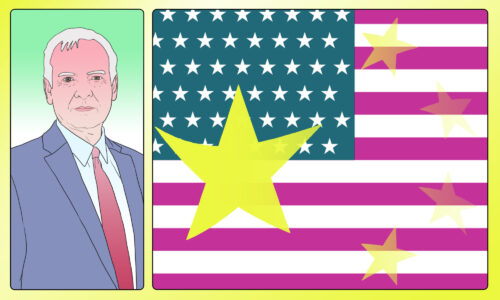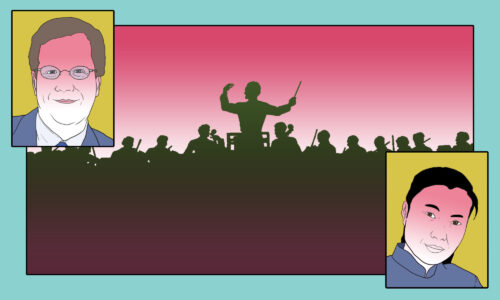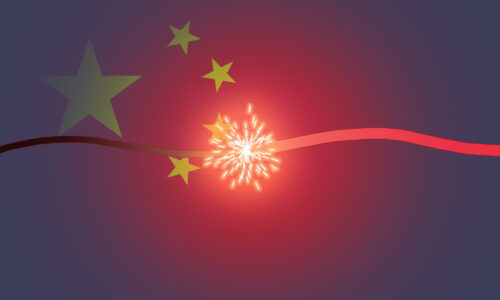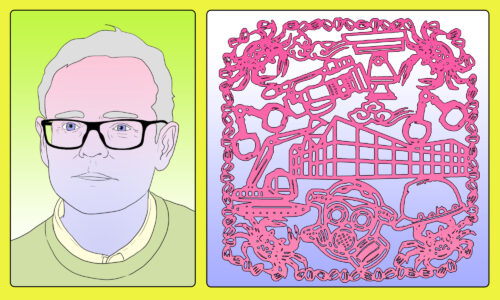Sinica extra: An excerpt of John Pomfret’s The Beautiful Country and the Middle Kingdom
Enjoy the short prologue of The Beautiful Country and the Middle Kingdom, reprinted with permission.
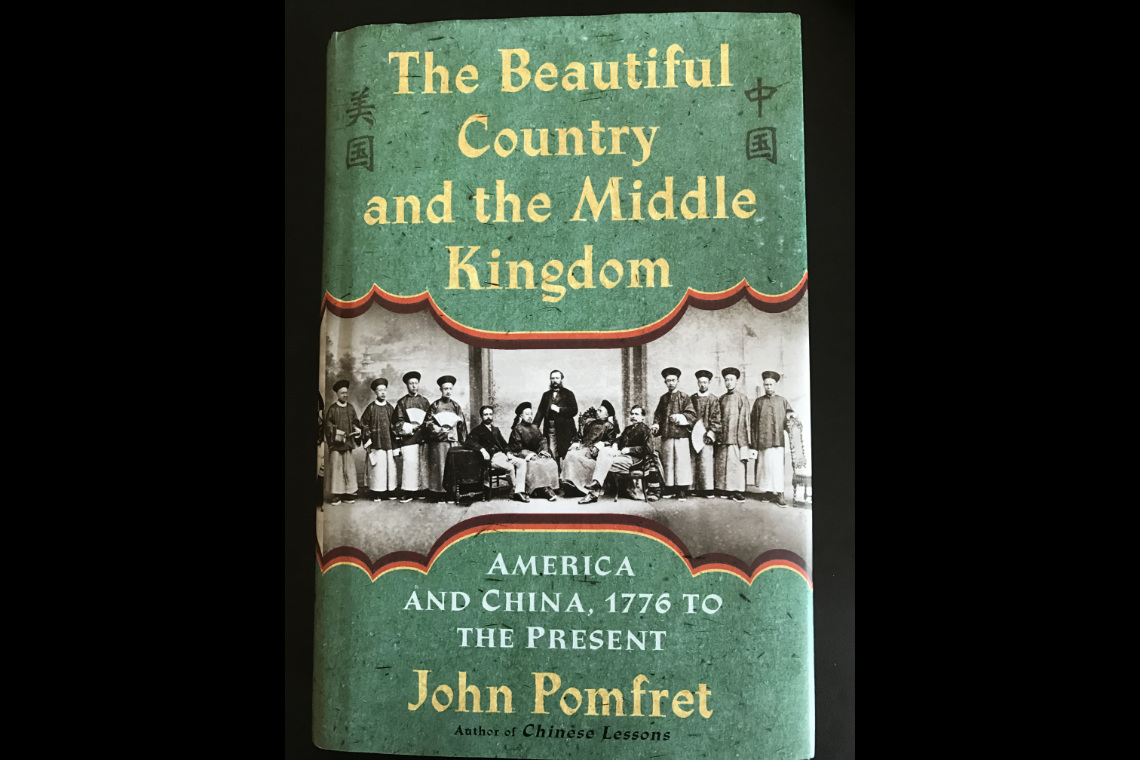
John Pomfret first went to China as a student in 1980, and covered the Tiananmen demonstrations in 1989 for the Associated Press. He was expelled for his efforts, but returned to Beijing a decade later to head up the Washington Post’s Beijing bureau. For more on his experience and some compelling and little-known stories, listen to the first and second halves of our two-part Sinica Podcast with John, and read our accompanying Sinica backgrounder. The following excerpt is the prologue to his book The Beautiful Country and the Middle Kingdom, the result of his decades of reporting and research into the deep history of U.S.-China relations.
Prologue
On a barren landmass nine thousand miles from his native Boston, William Dane Phelps stalked his prey. A colony of elephant seals lazed on a narrow beach, safe from the sharks and orcas that fed on them in the open sea. But here came Phelps, a teenager with a spear. Ten people were waiting to eat, and Phelps had been commanded to cook. The only problem: the meat—all nineteen hundred pounds of it—was alive. “I was left alone to get breakfast,” Phelps recalled. “I knew nothing of the habits of the elephant, had never seen one killed, and there I was.”
Phelps picked what looked to be the most docile of the beasts and leapt into battle. He struck the seal on the nose. The animal reared up on its flippers, bellowing as it towered over the boy. That opened up the monster’s midsection. Phelps tried to plunge in his spear, but the animal caught the weapon in its mouth and gave it a jerk, cracking Phelps on the head and knocking him on his back. Phelps righted himself, bashed out the creature’s eyes with his club, and, he wrote, “lanced him until he was dead.”
It was 1817, and fifteen-year-old Phelps was a six-month sail from home, having just landed on Marion Island, a speck of land one thousand miles from the southernmost tip of Africa. Phelps was one of a crew of twenty-five aboard the Pickering, a brig from Boston that was scouring the seas for fur seals. They had struck pay dirt on Marion. While their ship went off in search of more treasure, Phelps and seven others remained on the windswept isle to hunt and skin.
Phelps and his shipmates spent almost two years on Marion, living in a cave and clothing themselves in animal skins as they killed thousands of fur seals and amassed tons of elephant seal oil. But the men’s bounty was not destined for the coats, mufflers, and night lamps of the moneyed families of Beacon Hill and Back Bay. When the Pickering returned for the hunters, it whisked them off not to New England—but to Canton, China.
In the early nineteenth century, the promise of the China market sent Americans journeying around the world, killing and harvesting in staggering numbers: six million fur seals; the pelts of a quarter million sea otters; tons of sea cucumber and ginseng; forests of sandalwood; millions of silver dollars, all destined for China. Phelps and hundreds of other Americans spun the first threads of an enormous tapestry that they and their Chinese friends, competitors, customers, lovers, and enemies would weave into a story of wild exploits, extreme misjudgments, and unsung impact.
Many Americans believe that their country’s ties to China began when Richard Nixon traveled there in 1972, ending the Cold War between the two nations. In fact, the two sides have been interacting with and influencing each other since the founding of the United States. It wasn’t just free land that lured American settlers westward. It was also the dream of selling to China. The idea of America also inspired the Chinese, pulling them toward modernity and the outside world. American science, educational theory, and technology flowed into China; Chinese art, food, and philosophy flowed out. Since then, thread by thread, the two peoples and their various governments have crafted the most multifaceted—and today the most important— relationship between any two nations in the world.
Now is the time to retell the story of the United States and China. Today, these two nations face each other—not quite friends, not yet enemies— pursuing parallel quests for power while the world watches. No problem of worldwide concern—from global warming, to terrorism, to the proliferation of nuclear weapons, to the economy—can be solved unless Washington and Beijing find a way to work together.
America’s first fortunes were made in the China trade from 1783 until the early 1800s and profits from that commerce bankrolled America’s industrial revolution. In the 1830s, the 40-odd Americans living in the tiny trade outpost on the outskirts of Canton boxed far above their weight. Thanks to their labors, the United States became the Middle Kingdom’s number two trading partner after the mighty British. Chinese officials then began what would become a tradition: looking at the United States as a bulwark against China’s enemies. Over the years, they would propose alliances with the United States to counter the British, the Germans, the Russians (or Soviets), and the Japanese.
The first American Christian missionaries arrived in China in the 1830s. Though they are often held up as an unbecoming example of American cultural imperialism, forcing Jesus on an unwilling people steeped in an older Confucian creed, they were crucial to China’s development. Along with Western-educated Chinese, they supplied the tools to break the stranglehold of traditional orthodoxy. They taught the Chinese Western science, critical thinking, sports, industry, and law. They established China’s first universities and hospitals. These institutions, though now renamed, are still the best of their kind in China. America’s women missionaries crusaded against the barbaric customs of female infanticide and foot-binding, helping to accomplish the greatest human rights advances in modern Chinese history.
As Americans brought Christianity to China, laborers from southern China flocked to California in search of gold. By the 1860s they constituted the largest population of foreign-born people in the American West. Those who didn’t pan for gold wound up building the West. They drained the Sacramento River delta, creating one of the richest agricultural belts in history. They laid half of the Transcontinental Railroad connecting the East and West coasts. With their grocery stores, laundries, vegetable patches, and apothecaries stocked with herbal remedies, they provided essential services without which the West could not have been won.
Mainstream Americans turned on the Chinese in the 1870s. Congress made them the first ethnic group to be banned from the United States when it blocked Chinese workers from America in 1882. The Chinese did not stop coming, however, and, using funds collected by Chinese merchants, they hired America’s best lawyers to challenge a raft of racist laws and ordinances. Those cases contributed greatly to the advancement of civil rights for all Americans, undergirding, for example, the push in the 1950s to dismantle the “separate-but-equal” educational system for American blacks.
Despite its racism, America remained a land where many Chinese could realize their dreams. The Chinese were hounded across the West not simply because they were different. In their industriousness they rivaled and threatened competing white settlers and they made whites work harder. That ability to thrive in America and make all of America more competitive continues to this day.
While some Americans hated the Chinese, others nurtured a deep concern with China’s well-being. Though commercial activity dominated the US approach to Europe, South America, Japan, and elsewhere, the emotional attachment to these places—with the exception of Great Britain— was not nearly so deep as that to China. “Clear your plate; there are children starving in China” was a dinnertable mantra for generations of Americans. So was the “pennies for China” campaign in churches across the heartland.
With the turn of the twentieth century and the dawning of America as a global power, policy makers in Washington took more interest in China and fought to keep the country whole, despite efforts by European nations and Japan to carve it into colonies. American statesmen moved to bind China’s best and brightest to the United States, establishing a fund to educate Chinese stateside. The Boxer Indemnity scholarships spawned Nobel Prize winners, scientists, politicians, engineers, and writers and set the scene for a Chinese intellectual renaissance in the 1920s and 1930s.
Those same decades found Americans intrigued by Chinese culture— its food, art, poetry, and mysticism. A Chinese American woman from Los Angeles became the first nonwhite movie star in the United States. American taste buds accepted Chinese food. American tycoons put together the world’s greatest collections of Chinese art and endowed museums from Boston to New York, Washington, Kansas City, and San Francisco to house them.
In 1937, the Japanese invasion of China knit China and America closer together than ever. Before the war there had been ten thousand Americans in China; their numbers jumped tenfold in just a few years. But as the war progressed, America came to see its Chinese ally, Generalissimo Chiang Kai-shek, as dictatorial, incompetent and, worst of all, unwilling to fight Japan. As a result, many Americans viewed Chiang’s enemies, the Chinese Communist Party, as the true guerrilla David battling a mechanized Japanese Goliath. State Department officials were convinced of the accuracy of this perspective, and steered US policy away from providing aid to Chiang for his showdown with the Communists after the war.
We now know that the reality was more complex. Chiang’s armies fought so stalwartly that it was they, not the Communists, who sustained 90 percent of the casualties battling the Japanese. Americans at the time comforted themselves with the notion that the United States had done all it could to help Chiang Kai-shek. But countless promises of aid, weapons, and gold to his government had gone unfulfilled.
Some historians have argued that after the war the United States missed a chance to forge good relations with Chairman Mao Zedong as Communism took hold. But documents from Chinese archives released in recent years show that Mao was not ready for ties with America. Mao used hatred of the US as an ideological pillar of his revolution. Even today, the legacy of Mao’s paranoia about America colors China’s relations with the United States.
In the 1970s, Western obituaries reporting the demise of American influence in China were premature. Almost from the day China re-opened to the West, American pragmatism, its free market approach, and light-touch regulation have dominated China’s economic reforms. American culture has monopolized its movie and TV screens, and Christianity, despite Communist oppression, has experienced a renaissance of unprecedented proportions. American values, education, and even its fresh air are the envy of many Chinese. From Deng Xiaoping on, every Communist leader has sent at least one of his children to the US to study, including the Harvard-educated daughter of the current president, Xi Jinping.
When the two nations rediscovered each other in the 1970s, American sympathetic regard for the Middle Kingdom was rekindled, and Americans again worked to make China strong. Since then, no other country has been more important to China’s rise than the United States. Its open markets, open universities, and open society have served as the key foreign drivers of China’s return to greatness. Meanwhile, China has renewed its claim on the American imagination and entered every home with the ubiquitous three-word phrase: “Made in China.”
For those reading this book in China, the time is also right for a reappraisal of the Middle Kingdom’s ties to Meiguo, the Beautiful Country— China’s name for the United States. Communist histories have twisted the story of America’s two-hundred-year-long association with China. In the early days of the relationship, Chinese are told, the United States schemed to colonize China, acting no better than the imperialist powers of Old Europe or even Japan. They’re taught that American charity was a trick. The Chinese version of World War II airbrushes American sacrifices from the tale. China, not the United States, beat Japan, the Chinese learn. As for the Korean War, to this day Chinese textbooks maintain that South Korea, backed by America, started that conflagration, when in truth it was the North Koreans supported by Joseph Stalin and Mao. Over the past five decades, these same textbooks also claim, America has sought to keep China down.
Still, although the Communist Party won’t admit it publicly, many Chinese privately acknowledge America’s role in China’s ascent and the fact that, more than perhaps any other nation, China has benefited from the Pax Americana—the system of free trade, secure waterways, and globalized financial markets built by the United States and its allies after World War II. It is no coincidence that although China’s growth was impressive in the 1980s and 1990s, it became a global trading power only after 2001, when the United States ushered it into the World Trade Organization. As the imprisoned Nobel Peace Prize laureate Liu Xiaobo observed, China “needs challenge, even ‘menace’ from another civilization; it needs a vast and surging, boundless sea to pound it out of its isolation, its solitude and its narrow-mindedness.” America has filled that role.
Year by year, decade by decade, the two nations have bound themselves closer together. America has been China’s top trading partner since the 1990s. China surpassed Canada to become America’s top partner in 2015. Scientists on both sides of the Pacific cooperate in more fields—fighting cancer, splitting genes, looking for clean energy, investigating atomic particles, discovering new drugs—than their counterparts in any other two countries. Complications between these two great nations abound as the United States and China and Americans and Chinese cooperate and compete across the world.
If there is a pattern to this baffling complexity, it may be best described as a never-ending Buddhist cycle of reincarnation. Both sides experience rapturous enchantment begetting hope, followed by disappointment, repulsion, and disgust, only to return to fascination once again. In the nineteenth and twentieth centuries, American missionaries fantasized that China would become the world’s largest Christian nation, while mandarins in Beijing counted on America to shield their country from the depredations of European imperialists and Japan. Neither wish was fulfilled. But new expectations follow inevitable disillusion with every spin of history’s wheel.
At present, Americans have entered the disenchantment phase of the cycle, their views clouded by economic and strategic concerns. China, the narrative goes, pilfers American jobs, swipes its secrets, stockpiles its debt, and is now scheming to expel the US Navy from the Western Pacific. In the American imagination, China has traversed the arc from object of benevolence to fount of anxiety. A trip to the Great Wall, the Forbidden City, and the tomb of the First Emperor once topped the bucket list of generations of Americans. Today, US tourist visits to China are flat and public opinion toward the country has soured.
The Chinese feel dispirited, too. Their leaders expected America to make way for China in the Pacific. In the 1970s, senior American officials assured them that the US would pull its troops from South Korea and step aside as China recovered Taiwan, thereby completing China’s unification. Many Chinese have also grown tired of Americans telling them what to do. At the same time, other Chinese understand that they are losing the goodwill of many Americans and this has given them pause. While Americans are asking whether they have given China too much, some Chinese are beginning to ask whether they have pushed America too far. These fluctuations, too, are rooted in history. The two nations have feuded fiercely and frequently. Yet, irresistibly and inevitably they are drawn back to one another. The result is two powers locked in an entangling embrace that neither can quit.
William Dane Phelps would graduate from deckhand to captain and make a handsome living killing sea mammals and selling their hides and oil to the Chinese. Generations of Americans and Chinese followed in his wake, weaving together two vastly different cultures. Through all the whipsaw cycles of boom and bust, dashed hopes and exalted dreams, rivers of blood and mountains of trade, the relationship between the United States and China is powered by love and hate, contempt and respect, fear and awe, generosity and greed.
Chinese and Americans arouse deeply conflicted feelings in one another. Yet no other two nations’ mutual dependence is as vital to the fate of the world as the one between these two great powers. In search of wiser choices for the future, we look to a story that began three centuries ago, in the founding of a young nation, and the death knell of an old one.

